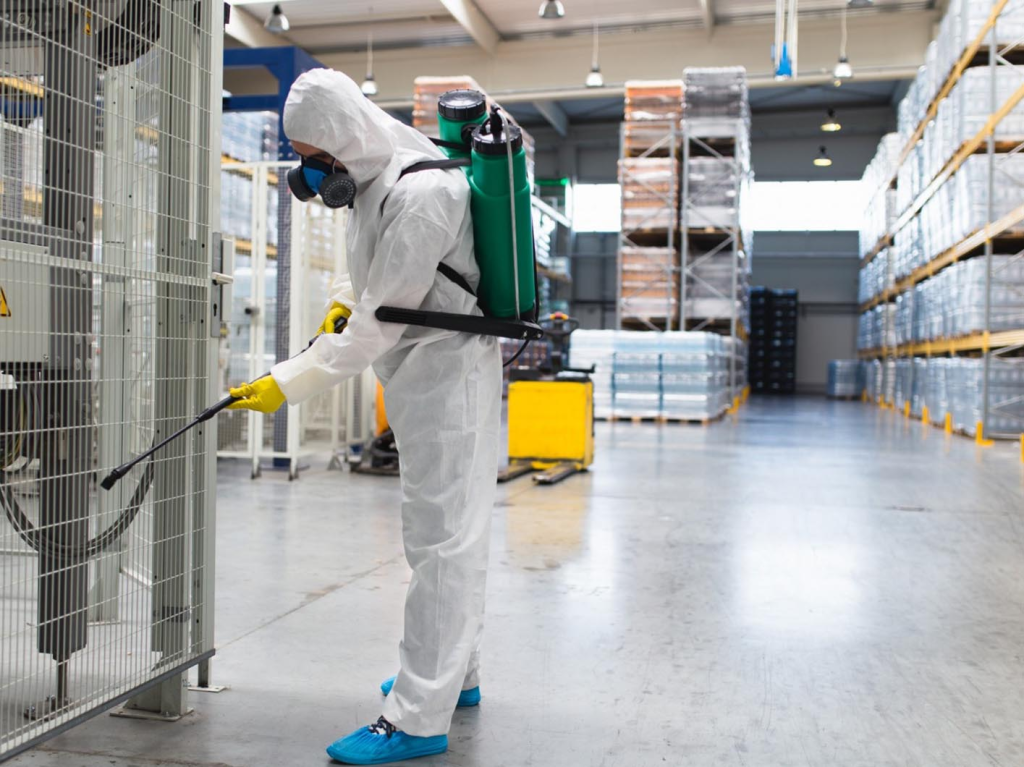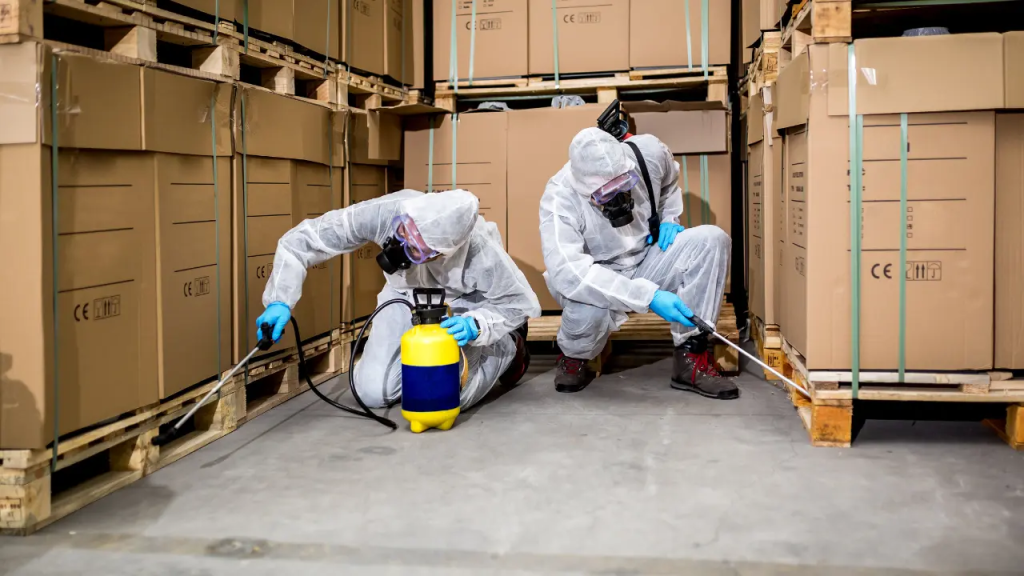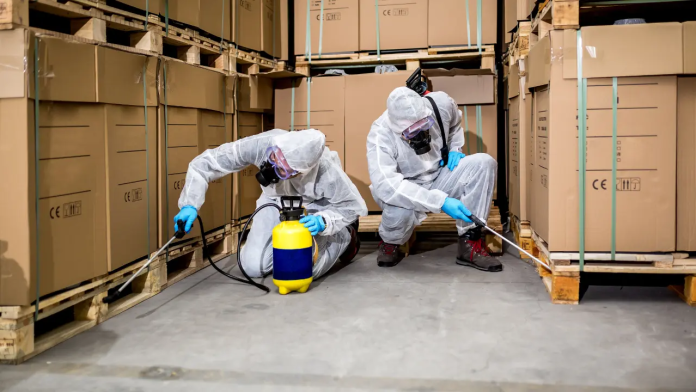
Warehouses play a critical role in the supply chain, storing large quantities of goods before they reach consumers or businesses. However, these facilities are highly vulnerable to pest infestations due to their size, storage conditions, and constant movement of goods. Commercials pest control for warehouses in Greenwich is essential to maintain hygiene, prevent property damage, and comply with health regulations. A single pest infestation can lead to product contamination, financial losses, and reputational damage, making pest management a top priority.
Pests such as rodents, cockroaches, flies, and stored-product insects thrive in warehouse environments. They contaminate inventory, destroy packaging, and create health risks for employees. Without a proactive pest control plan, warehouses may face regulatory violations and disrupted operations. In this guide, we will explore why commercials pest control for warehouses in Greenwich is crucial, the common pests affecting storage facilities, and the best strategies for keeping warehouses pest-free.
Why Warehouses Need Commercial Pest Control
Warehouse environments provide pests with ideal conditions—food sources, shelter, and hidden nesting spots. Effective pest control is crucial for several reasons:
- Preventing Contamination – Pests can spread bacteria and diseases by contaminating stored products, making them unsafe for consumers.
- Protecting Inventory – Rodents and insects can chew through packaging, rendering products unsellable and leading to financial losses.
- Ensuring Regulatory Compliance – Warehouses must adhere to strict health and safety regulations to avoid fines and legal consequences.
- Maintaining Business Reputation – A pest infestation can damage a company’s reputation, leading to lost business and customer trust.
By implementing commercials pest control for warehouses in Greenwich, businesses can ensure a clean and pest-free storage facility.
Common Pests in Warehouses
Rodents (Rats & Mice)
Rodents are one of the most dangerous pests in warehouses. They gnaw through packaging, wires, and insulation while spreading harmful diseases. Signs of a rodent infestation include droppings, gnaw marks, and nesting materials.
Cockroaches
Cockroaches are attracted to food storage areas, break rooms, and damp spaces. They multiply quickly and can carry bacteria, causing health risks for workers and product contamination.
Stored Product Pests
Beetles, moths, and weevils infest dry goods, grains, and packaged food. They can lay eggs inside packaging, leading to product spoilage and rejection.
Flies
Flies pose serious hygiene risks, especially in warehouses storing food and beverages. They are known to carry bacteria and viruses, contaminating stored products.
Ants
Ants often invade warehouses in search of food and moisture. Some species, like carpenter ants, can also damage wooden structures.
Best Practices for Warehouse Pest Control
1. Regular Inspections
Conducting routine inspections is crucial for detecting pest activity before infestations worsen. Warehouses should be checked for signs of pests, such as droppings, damaged goods, and nests.
2. Maintaining Cleanliness
A clean warehouse is less attractive to pests. Employees should regularly clean storage areas, dispose of trash properly, and keep food in sealed containers to eliminate pest food sources.
3. Sealing Entry Points
Rodents and insects enter warehouses through small cracks, open doors, and ventilation systems. Sealing these entry points with caulk, metal mesh, and weather stripping helps keep pests out.
4. Proper Waste Management
Garbage bins should be emptied frequently and kept away from storage areas. Ensuring that waste disposal areas are clean and well-maintained minimizes pest attraction.
5. Using Pest Monitoring Systems
Placing traps and monitoring devices in key areas helps detect pest activity early. This allows warehouse managers to take action before infestations spread.
6. Implementing an Integrated Pest Management (IPM) Plan
IPM focuses on long-term pest prevention using eco-friendly and science-based strategies. This includes regular monitoring, habitat modification, and minimal use of pesticides.
7. Partnering with a Professional Pest Control Service
Hiring a commercial pest control company ensures that warehouses receive tailored solutions to manage pest threats effectively. Professional pest control services use advanced treatment methods and preventative measures to keep facilities pest-free.
The Role of Integrated Pest Management (IPM) in Warehouses
IPM is a strategic approach that combines preventive measures, monitoring, and targeted treatments. Its key components include:
- Pest Identification – Determining the specific pests present in the warehouse to apply the right treatment.
- Habitat Modification – Eliminating conditions that attract pests, such as moisture buildup, clutter, and food sources.
- Biological Control – Using natural predators or eco-friendly treatments to manage pest populations.
- Chemical Control – Applying pesticides only when necessary, ensuring minimal risk to workers and products.
By implementing IPM, warehouses in Greenwich can maintain a long-term, sustainable pest control strategy.

Benefits of Professional Pest Control for Warehouses
Working with a commercial pest control provider offers warehouses multiple benefits, including:
- Custom Treatment Plans – Professionals create tailored pest management strategies based on warehouse size, stored goods, and risk factors.
- Compliance with Regulations – Pest control experts ensure warehouses meet industry regulations, avoiding fines and business disruptions.
- Advanced Technology & Techniques – Pest control companies use state-of-the-art equipment, non-toxic treatments, and monitoring systems for effective pest prevention.
- Ongoing Support & Maintenance – Regular inspections and follow-ups help warehouses stay protected from recurring pest problems.
By investing in commercials pest control for warehouses in Greenwich, businesses can ensure their facilities remain pest-free and fully operational.
Conclusion
Pest control is a critical aspect of warehouse management. Without proper measures, pests can infiltrate storage areas, damage inventory, and cause major business setbacks. Commercials pest control for warehouses in Greenwich is the best solution to protect goods, ensure compliance, and maintain a safe working environment. By implementing preventive strategies, working with professionals, and adopting an Integrated Pest Management approach, warehouses can effectively eliminate pest threats. Investing in commercial pest control is essential for long-term success in the logistics and storage industry.
FAQs
1. How often should warehouses schedule pest control services?
Warehouses should conduct monthly pest control inspections to prevent infestations. High-risk facilities may require bi-weekly visits, depending on their pest exposure level.
2. What are the signs of a pest infestation in a warehouse?
Common signs include droppings, damaged packaging, foul odors, sightings of live pests, and nests in storage areas.
3. Are pest control treatments safe for warehouses storing food?
Yes, many pest control companies use eco-friendly and non-toxic solutions that are safe for warehouses handling food and sensitive products.
4. What preventive measures can warehouse owners take against pests?
Warehouse owners should keep storage areas clean, seal entry points, maintain proper waste disposal, and implement a pest monitoring system.
5. Why should warehouses hire a professional pest control company?
Professional pest control services provide customized treatment plans, ensure regulatory compliance, and offer long-term pest prevention solutions that protect inventory and facilities.
By following these pest control strategies, warehouses in Greenwich can maintain a pest-free, safe, and efficient storage environment




